Triads are the fundamental building blocks of harmony in music.
They can create diverse emotional landscapes, define the tone of a composition, and serve as the foundation for more complex chords.
They offer endless creative possibilities for shaping the sound of a track.
So, as a music producer, it’s important to know all about triads in order to produce compelling and intriguing music.
As well as enhance your tracks’ emotional impact and master the art of sound design.
In today’s article, we’ll be breaking down:
- What are triads (triad qualities) ✓
- Major triads & minor triads ✓
- Diminished triads and augmented triads ✓
- Keys to boost your music theory knowledge ✓
- Expanding with seventh and ninth chords ✓
- The creative use of triad inversions ✓
- Chord qualities and their construction ✓
- Scale degree eessentials ✓
- Impact of key signatures on triads ✓
- Harmonic function in music ✓
- Advanced harmonic techniques ✓
- The significance of intervals in triads ✓
- Much more, so you’ll never ask “what are triads” again ✓
After reading this article, you’ll possess a solid understanding of triads to help you create intricate harmonies and dynamic compositions like a professional.
Whether you’re a new producer or looking to refine your songwriting skills, it will empower you to use triads with confidence and creativity in your music.
So, let’s dive in…
Table of Contents
- What are Triads?
- Major and Minor Triads: Breaking it Down
- Diminished Triads
- The Power of Augmented Triads
- Triads Beyond the Basics: Seventh and Ninth Chords
- Exploring Triad Inversions in Composition
- Utilizing Scale Degrees in Triad Formation
- Key Signatures and Their Impact on Triads
- Pro Tip: Intervals
- What Are Triads: Final Thoughts
What are Triads?

Triads form the epicenter of Western music, and understanding them is pivotal for any music producer, artist, or singer.
At its core, a triad is a set of three notes that are played simultaneously.
These three notes typically consist of:
- A root note
- A third
- A fifth
It creates the most basic form of a chord.
The beauty and complexity of music often stem from these simple beginnings.
Knowing what triads are and how they function opens up a world of possibilities in composition and sound design.
Triads are not just theory 一 they are tools that can be manipulated and transformed to create diverse soundscapes and really capture peoples’ attention.
From the lush harmonies in a ballad to the pulsating chords in a dance track, triads are ever-present.
Major and Minor Triads: Breaking it Down
Major and minor triads, each with their unique emotional qualities, are fundamental in shaping the mood and character of a track. Let’s break down these two most common types of triads (major triads and minor triads) to understand their structures and impact on music composition.
-
Major Triads
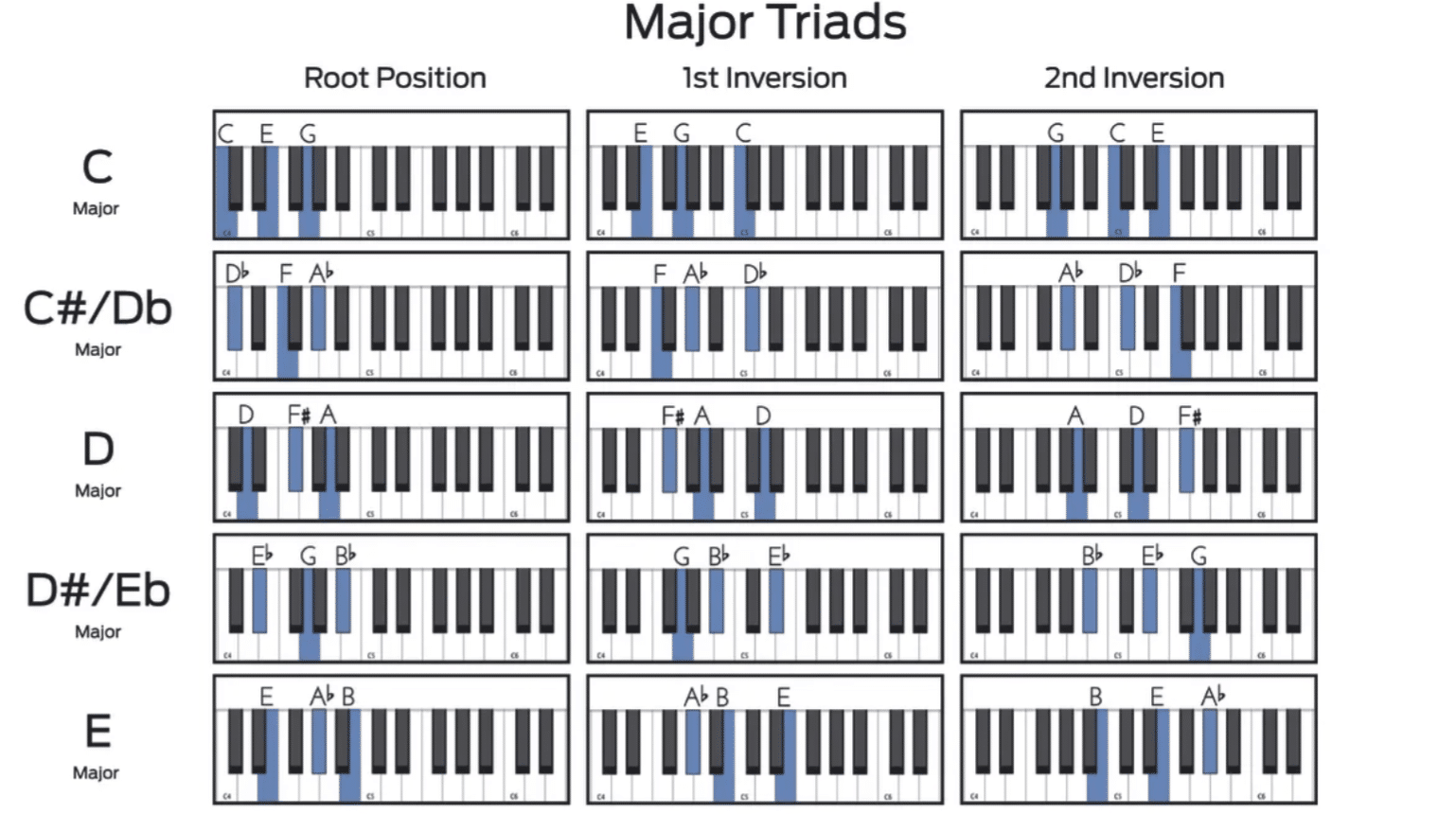
The major triad, a fundamental element in music composition, is a three-note chord consisting of: a root, a major third, and a perfect fifth.
For example, in a C major triad, the notes are C (root), E (major third), and G (perfect fifth).
The configuration of these three notes creates a harmonious and uplifting sound that is essential in most songs.
The major chord resonates with a cheerful and bright vibe, which makes it a staple in various music genres around the world.
Major triads serve as building blocks for creating compelling melodies and harmonies.
By altering the root note of a major triad, you can craft distinct musical moods.
A major triad, like the C major triad, can be transformed by changing its starting note, resulting in different major chords with unique sonic qualities.
For example, shifting from a C major triad to a G major triad changes the tonal center and mood 一 demonstrating the versatility of major chords.
Experimenting with the structure of a major triad opens up creative possibilities.
You can modify a major triad by:
- Inverting it
- Playing around with the intervals
- Adding extensions like seventh and ninth chords
This not only enriches the chord quality but also enhances the harmonic function within a piece.
For instance, a C major triad can evolve into a more complex C major seventh chord, adding layers of depth to the composition.
-
Minor Triads
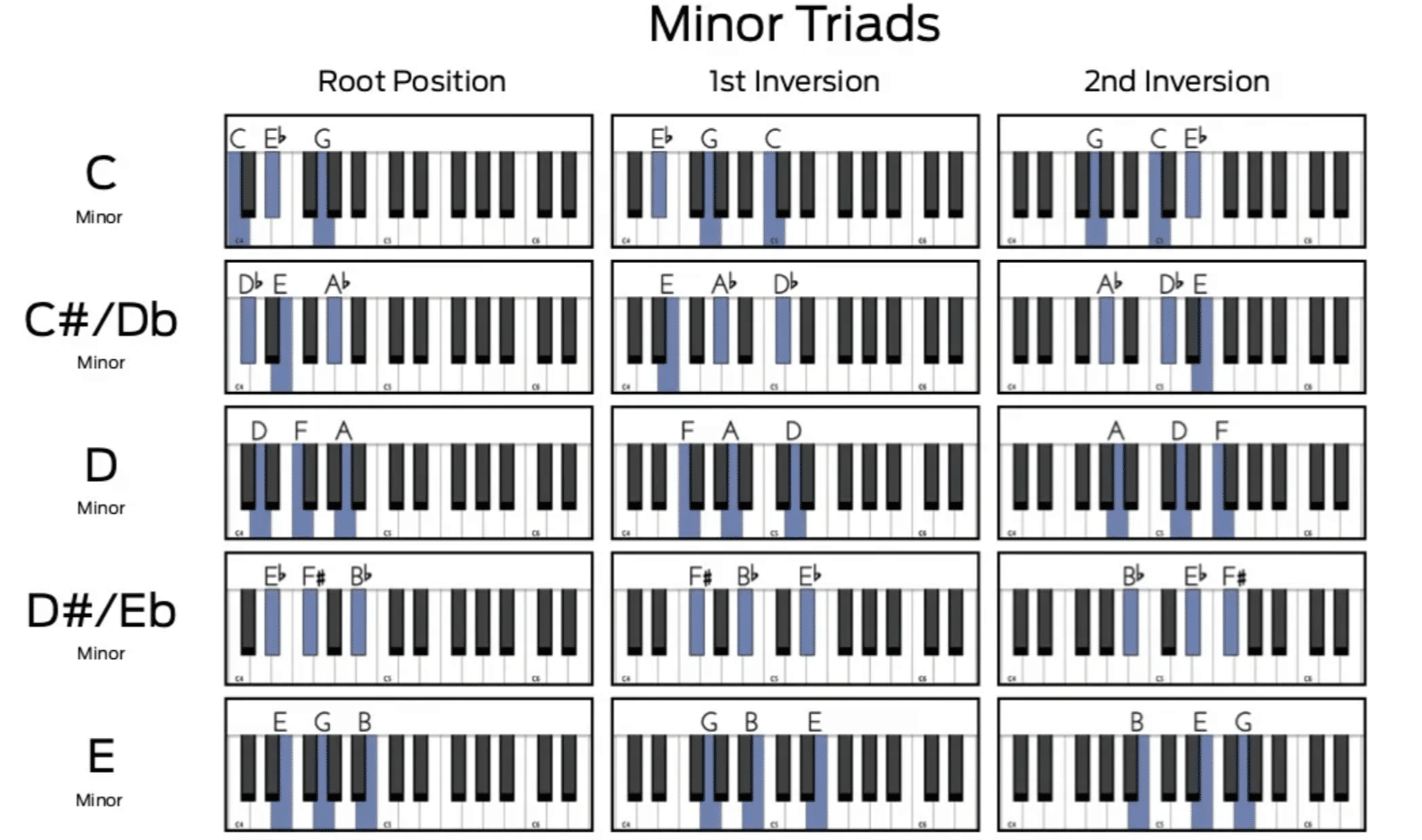
Minor triads, characterized by a more somber tone compared to major triads, are made up of: a root, a minor third, and a perfect fifth.
A typical example is the C minor triad, comprising C (root), E♭ (minor third), and G (perfect fifth).
The minor chord emanates a melancholic or introspective feeling, pivotal in conveying emotional depth in music.
These triads are integral in genres where mood and atmosphere play a key role, such as blues, jazz, and certain electronic music styles.
Minor triads are tools for incorporating emotion and complexity into your compositions.
By varying the root note of a minor triad, different minor chords emerge, each carrying its unique emotional weight.
A D minor triad, for instance, will have a different impact compared to an A minor triad (despite both being minor chords).
This diversity allows you to tweak your music to the desired emotional tone, just like you can with the major scale & minor scale.
The manipulation of minor triads extends beyond simple chord construction.
You can explore different voicings, inversions, and extensions like adding a seventh or a ninth to a minor chord.
For example, a C minor triad can be altered to a C minor seventh chord, changing the harmonic function and adding complexity to your music.
Diminished Triads
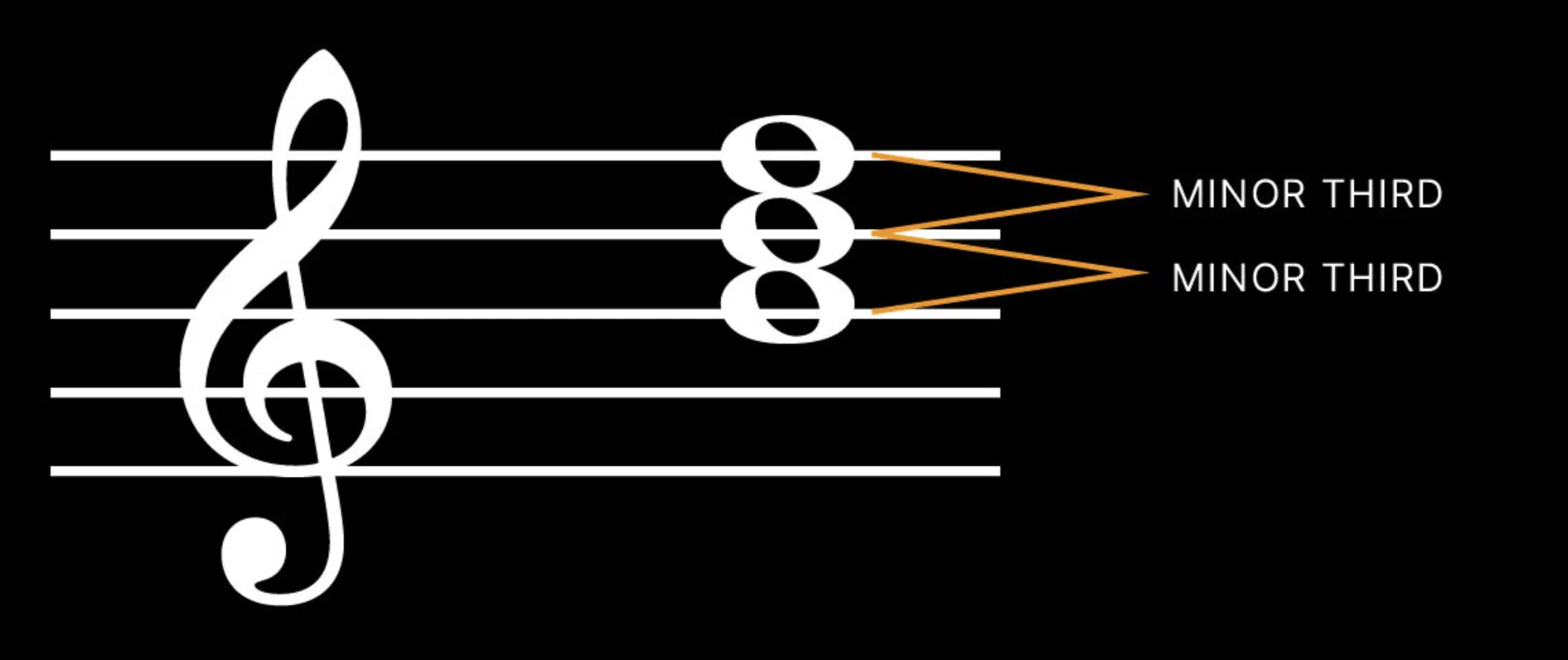
Diminished triads, known for their tense and unresolved sound, are an intriguing aspect of music theory.
Diminished triads are formed by:
- A root note
- A minor third
- Adiminished (flattened) fifth
For example, a C diminished triad consists of C (root), E♭ (minor third), and G♭ (diminished fifth).
Diminished chords, often used in genres like jazz and classical, provide a sense of drama and urgency in a composition.
Diminished triads can be used to create a sense of dissonance or tension, which is vital for dynamic compositions.
They are particularly effective in transitional sections of a track 一 leading the listener to a resolution, often in the form of a major or minor chord.
For example, transitioning from a C diminished triad to a D minor triad can create an effective emotional shift in a piece.
You can experiment with diminished triads by altering their inversions or integrating them with other triad types.
This experimentation can lead to unique sound textures, vital in creating memorable musical moments.
A diminished triad, when used creatively, adds a layer of sophistication/depth to your music and showcase your knowledge of harmonic function.
The Power of Augmented Triads
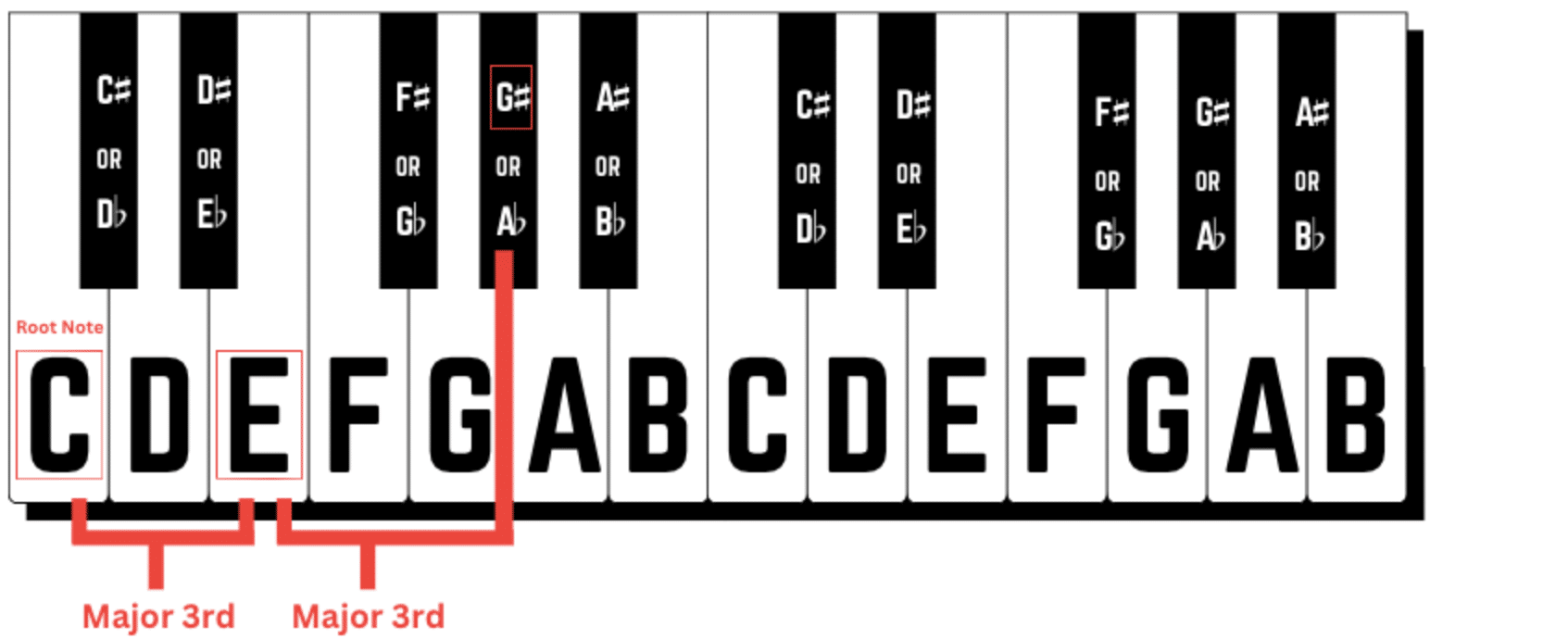
Augmented triads stand out in music theory with their distinctively bright and somewhat dissonant sound.
An augmented triad is composed of:
- A root note
- A major third
- An augmented (raised) fifth
Take the C augmented triad, for example, which includes C (root), E (major third), and G♯ (augmented fifth).
NOTE: An augmented chord, or augmented chords, possess a unique, unresolved quality, making them less common but highly impactful in music composition.
Augmented triads offer a tool for introducing an element of surprise or tension.
Their unusual sound can create a striking effect in a piece, especially when contrasted with more conventional major and minor chords.
For example, shifting from a C major triad to a C augmented triad can dramatically alter the mood of a section 一 providing a sudden lift or twist.
You can play with augmented triads by using them in modulation, changing keys, or creating unexpected turns in harmonic progressions.
An augmented triad can also lead effectively into other note chords.
For example, you can transition from a C augmented to an F minor triad would offer a smooth yet surprising movement.
Triads Beyond the Basics: Seventh and Ninth Chords

Moving beyond basic triads, seventh and ninth chords offer additional layers of complexity and emotion to music.
- A seventh chord 一 Is a triad with an added seventh interval.
- A ninth chord 一 Includes both a seventh and a ninth.
These extended chords provide depth and a more sophisticated sound compared to simple triads.
Seventh and ninth chords are used to enrich harmonies and create more nuanced musical textures.
For example, a C major triad can be extended to a C major seventh or a C major ninth, adding layers of warmth and complexity.
These chords are particularly popular in genres like jazz, soul, R&B, and EDM.
The use of seventh and ninth chords requires a good understanding of music theory 一 particularly regarding chord qualities and scale degrees.
These chords can be used to create interesting chord progressions, enhancing the emotional impact and engagement of a piece.
For instance, a progression from a C major ninth to an E minor seventh can provide a smooth and engaging transition.
Exploring Triad Inversions in Composition
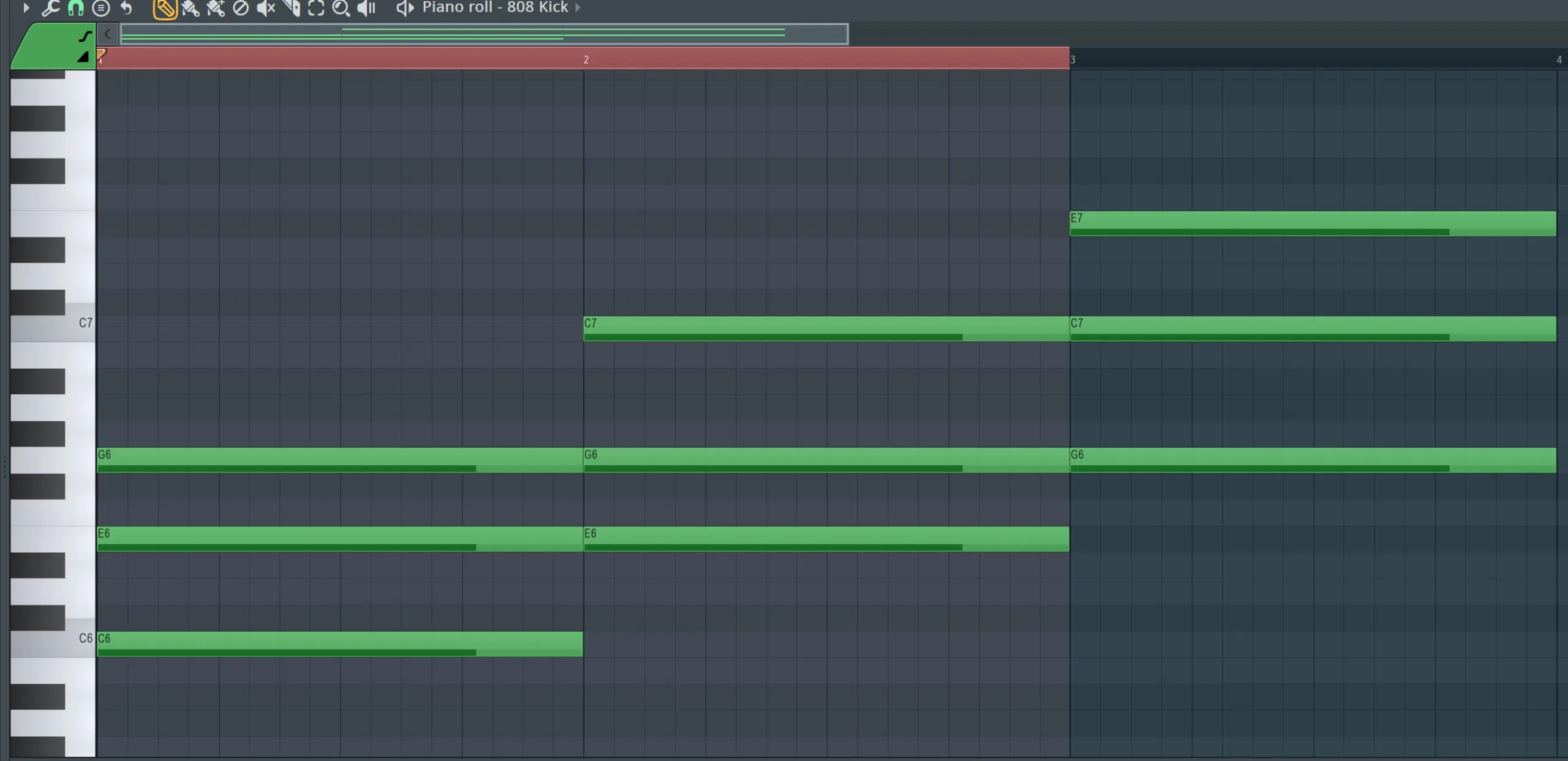
Triad inversions are a fundamental technique in music composition, offering a way to vary the sound of a chord without changing its basic quality.
An inversion involves changing the order of the notes in a triad, such as placing the third or the fifth in the bass instead of the root.
This alters the chord’s texture and feel while maintaining its harmonic identity.
For example, inverting a C major triad (C-E-G) so that E becomes the lowest note creates a different sonic character while retaining the major chord quality.
These inversions are crucial in the production world for creating:
- Intriguing basslines
- Melody variations
- Harmonic formulas
A C major scale in first inversion (E-G-C) or second inversion (G-C-E) can be used to smooth out transitions between chords.
Or, to add a subtle change in a repetitive progression, which can enhance the overall texture of your track.
Utilizing Scale Degrees in Triad Formation
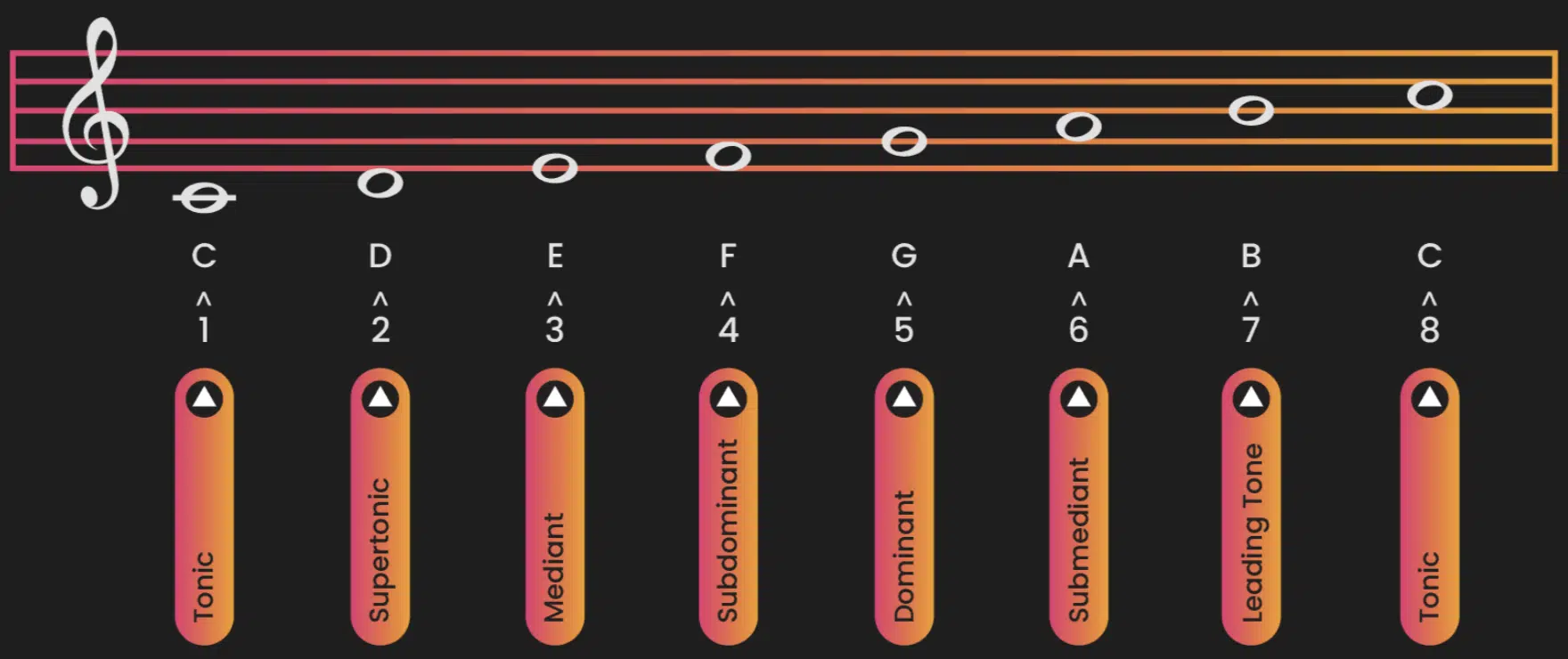
Scale degrees play a pivotal role in forming triads.
Each note of a scale represents a potential root position for a triad, which in turn dictates the chord’s quality.
In a major scale, the first scale degree, fourth degree, and fifth scale degee typically produce major triads.
While, conversely, the second scale degree, third scale degree, and sixth scale degree often yield minor triads.
The seventh degree, a diminished triad in major scales, offers a unique harmonic flavor.
Leveraging scale degrees in triad construction is key to creating harmonically rich and engaging tracks.
If you’re working in C major, for example, can build a progression using triads rooted on different scale degrees, such as:
- C major (I)
- F major (IV)
- G major (V)
This understanding helps you create compelling melodies/harmonies and develop a deeper understanding of song structure and three note chords in general.
From the first note and middle note to the last note, it will help your chords be on point.
Key Signatures and Their Impact on Triads
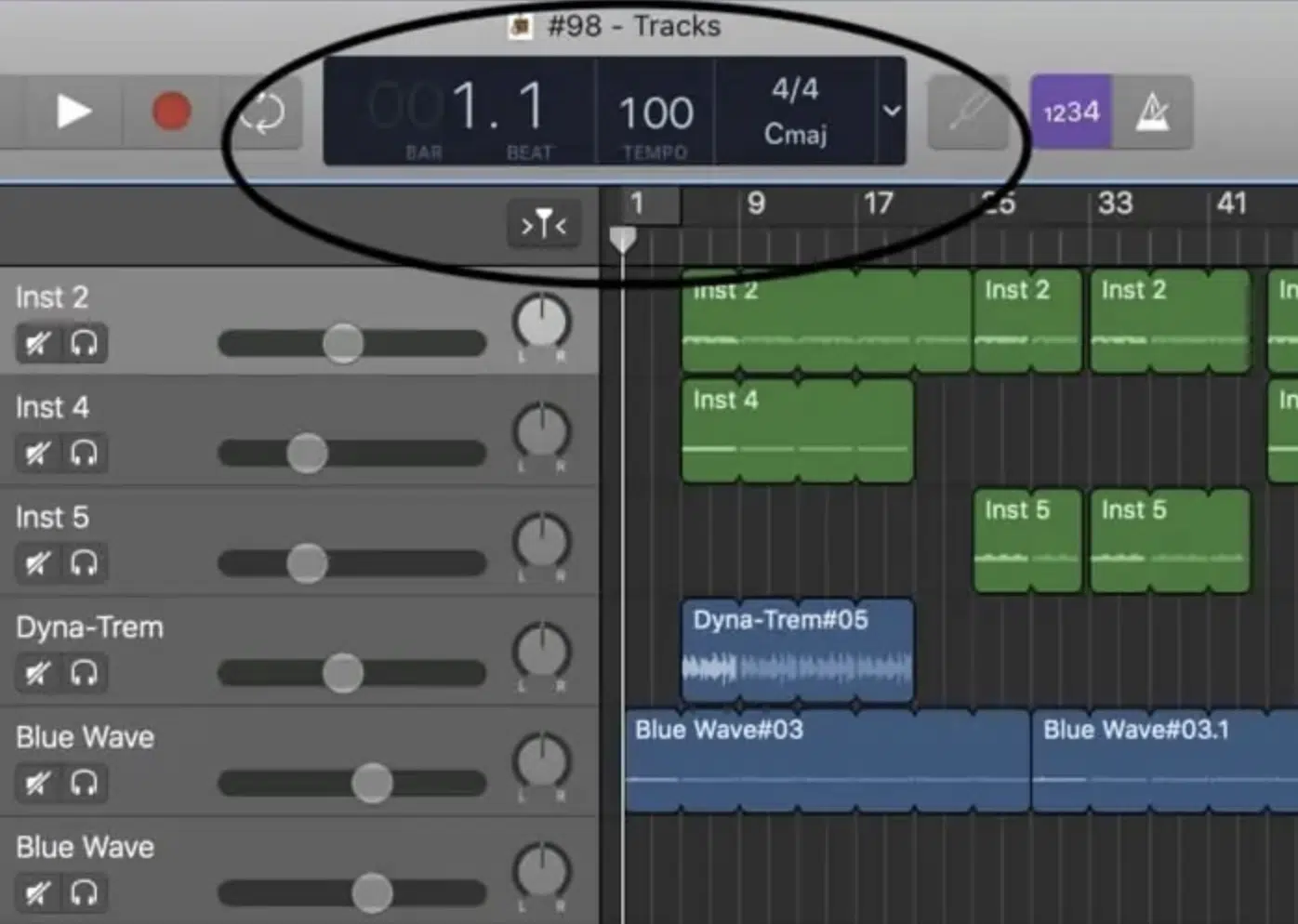
Key signatures fundamentally influence the formation and sound of triads.
They determine the scale from which the triads built, which affects the available notes and the resultant chord qualities.
For example, triads formed in the key of C major will differ significantly from those in E minor, despite sharing some common notes.
Key signatures are a guide to creating cohesive and harmonically sound pieces.
Understanding how triads change with each key signature enables you to:
- Transpose your music effectively
- Maintain harmonic function consistency
- Explore creative modulations
For instance, you might use a C major triad (C-E-G) in the key of C major, but switch to a C minor triad (C-E♭-G) when working in the key of E♭ major.
This will demonstrate your adaptability and musical knowledge right away.
Pro Tip: Intervals

Intervals, the distance between two notes, are the building blocks of triads.
The specific intervals used determine the type of triad, like a:
- Major triad
- Minor triad
- Diminished triad
- Augmented triad
For example, a major triad is built from a root note, an interval of a major third above the root, and a perfect fifth above the root.
This fundamental understanding of intervals is crucial for crafting chords and melodies.
Mastery of intervals allows you to create diverse and rich soundscapes.
By altering intervals within a triad, new chord qualities and sonic textures emerge.
For instance, altering the third in a C major triad (composed of the three notes C-E-G) to a minor third (composed of the three note chords C-E♭-G) transforms it into a C minor triad.
This showcases the importance of interval choices in chord construction.
NOTE: Exploring triads across multiple octaves can reveal fascinating textures.
This is especially true when the third note is emphasized or when stacked thirds are used to build chords 一 with the highest note often creating a sense of climax.
This approach, combined with careful attention to half-steps and the next note in the progression, can significantly enrich the harmonic complexity of a piece.
What Are Triads: Final Thoughts
Understanding the answer to the question “what are triads” is pivotal for any music producer or songwriter, as these simple yet powerful chords form the foundation of captivating melodies and harmonies.
From the bright and uplifting major triads to the deep and saddening minor triads, each brings its unique character to any song.
And don’t forgot the tension-filled diminished and augmented triads, of course.
The importance of triads in music cannot be overstated.
They are the building blocks from which complex chords and progressions are constructed 一 providing a basic yet essential framework for creating music.
The creative manipulation of triads can help you explore a wide range of emotional landscapes and make your tracks shine.
Whether it’s crafting a catchy pop melody or a soulful blues riff, triads are at the heart of it all.
Recognizing the vital role of triads in music, the legendary Reggae MIDI Chord Collection is one of the most invaluable packs, created to showcase a genre where they are super common.
The collection offers a wide array of irresistible triads in both major and minor keys.
The straightforward sound and firm structure of triads provide a solid emotional base for epic rhythmic and melodic play.
It gives you immediate access to all the chords and progressions you’ll need to create chart-topping tracks.
So, embrace the simple impact of triads, and watch as they transform your musical creations.
Until next time…







Leave a Reply
You must belogged in to post a comment.